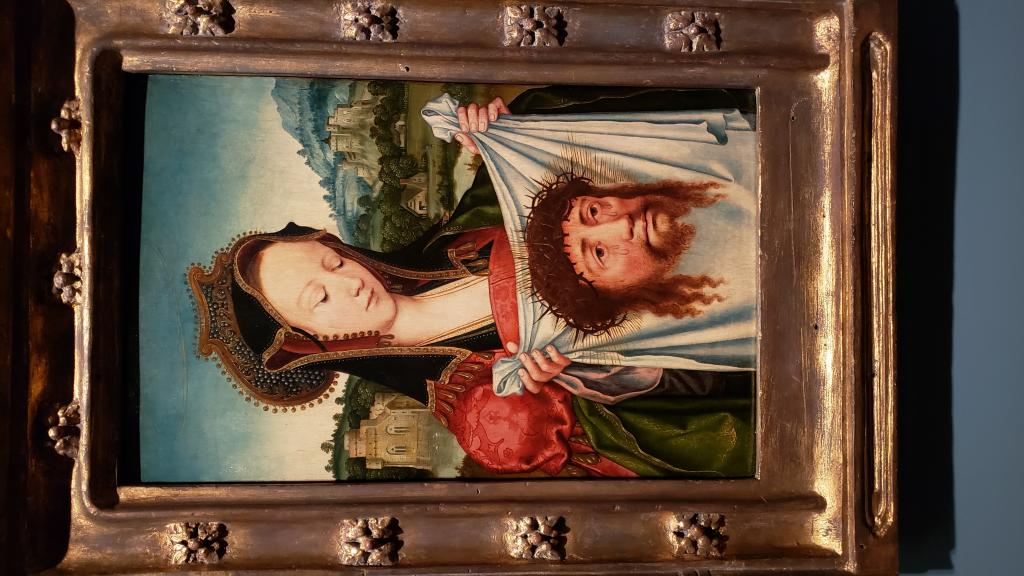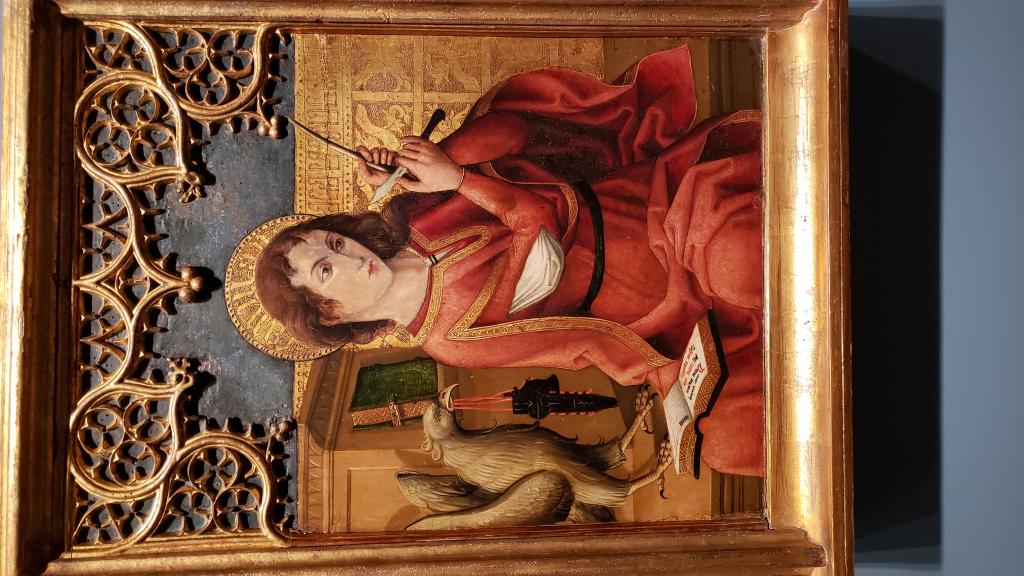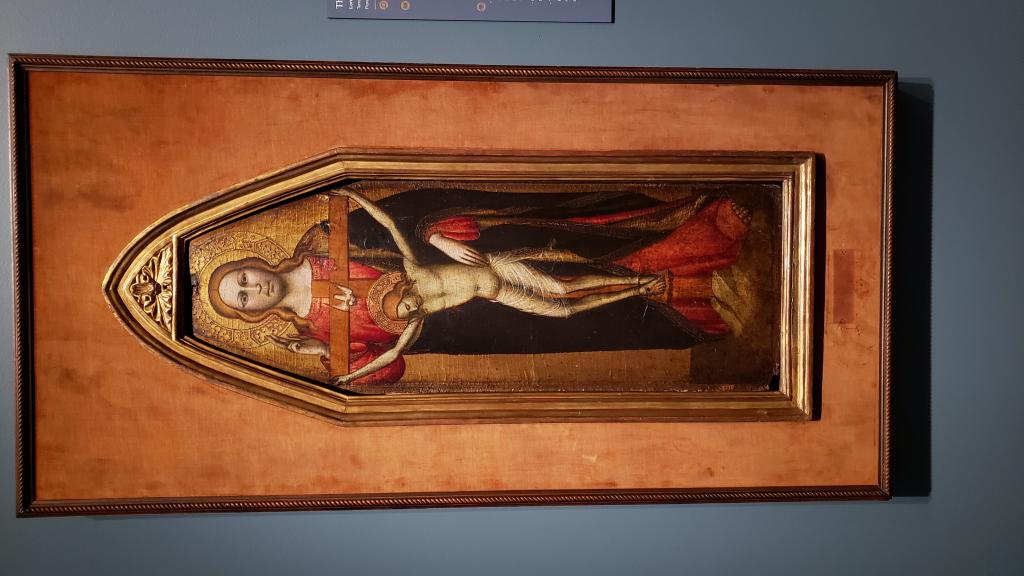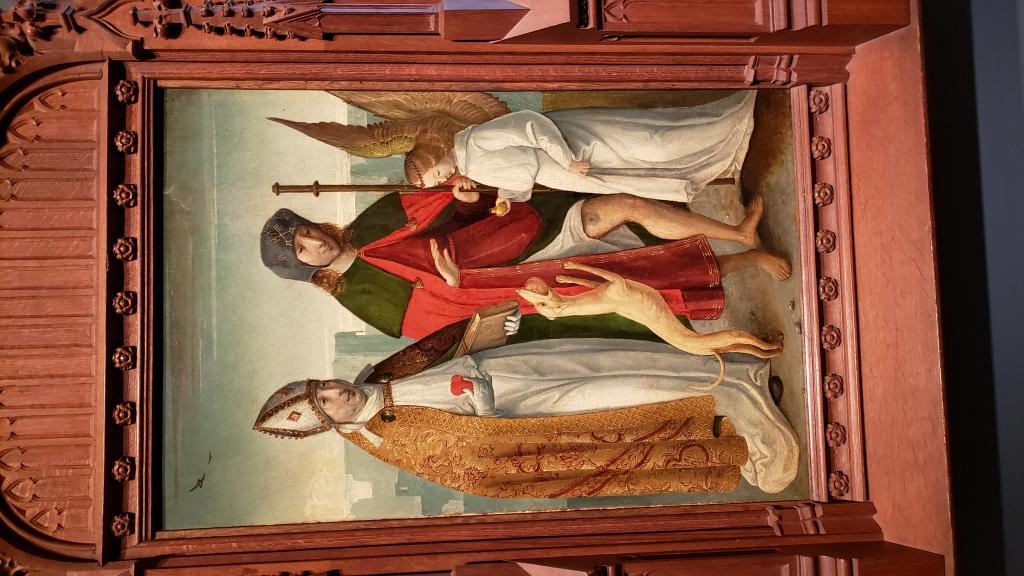Here is a very different image of St. Augustine with St. Roch (who???), and a dog and angel thrown in for good measure. The painting is by Juan de Flandes (Flemish, 15th century). St. Roch is a French saint who, much like St. Francis gave up all his possessions and ministered to the ill. The story goes he retreated into the woods to die, not wishing to infect anyone, and was ministered to by an angel and a dog, and then carried on with his ministry, having recovered. Upon his return from Italy (where he ministered) to Montpelier in France he was arrested as a spy, thrown in jail, and died! These sorts of hagiographic stories (much of which cannot be historically verified independently), are meant to encourage the faithful to persevere and serve the Lord.
One of the more famous Catholic saints, not mentioned in the Bible, is St. Veronica, who according to Catholic legend wiped the face of the Christ as he was processing along the Via Dolorosa, and it left an image on the cloth she used to do so. One of the growing aspects of Catholicism in the early and later Middle Ages was the belief in holy relics, and also in passion mysticism— the notion that Christ’s bloody sweat, and clothes with it on it, had healing properties. Jacob von Oostsamen is the Dutch painter of this portrait from the 15th century.  The notion here is ‘he who has seen the Son has seen the Father’ (hence they look alike in the painting) and the Holy Spirit is hovering above them both in the picture frame.
The notion here is ‘he who has seen the Son has seen the Father’ (hence they look alike in the painting) and the Holy Spirit is hovering above them both in the picture frame.
A Spanish rendering of St. John the Evangelist, traditionally depicted as young, red headed, and with an eagle, the symbol of his Gospel, is done by ‘the Master of Cueza’ (16th century).
 Without much doubt, there was considerable confusion and fusion of traditions in regard to several early Christian figures— Mary Magdalene was blended together with the sinner woman of Luke 7, or the woman caught in adultery in John 8, and also with Mary of Bethany. John Zebedee was blended together with the Beloved Disciple of the 4th Gospel (even though there are no crucial Zebedee stories in John’s Gospel such as one finds in the Synoptics, and instead Lazarus is said to be the one whom Jesus loves in John 11) and he was also assumed to be John of Patmos, despite the obvious differences in the Greek and in the ways of handling the OT in the 4th Gospel and Revelation.
Without much doubt, there was considerable confusion and fusion of traditions in regard to several early Christian figures— Mary Magdalene was blended together with the sinner woman of Luke 7, or the woman caught in adultery in John 8, and also with Mary of Bethany. John Zebedee was blended together with the Beloved Disciple of the 4th Gospel (even though there are no crucial Zebedee stories in John’s Gospel such as one finds in the Synoptics, and instead Lazarus is said to be the one whom Jesus loves in John 11) and he was also assumed to be John of Patmos, despite the obvious differences in the Greek and in the ways of handling the OT in the 4th Gospel and Revelation.
Here below is a very interesting attempt to depict the Holy Trinity in one painting from Lorenzo di Martino of Firenze (14th century). 













